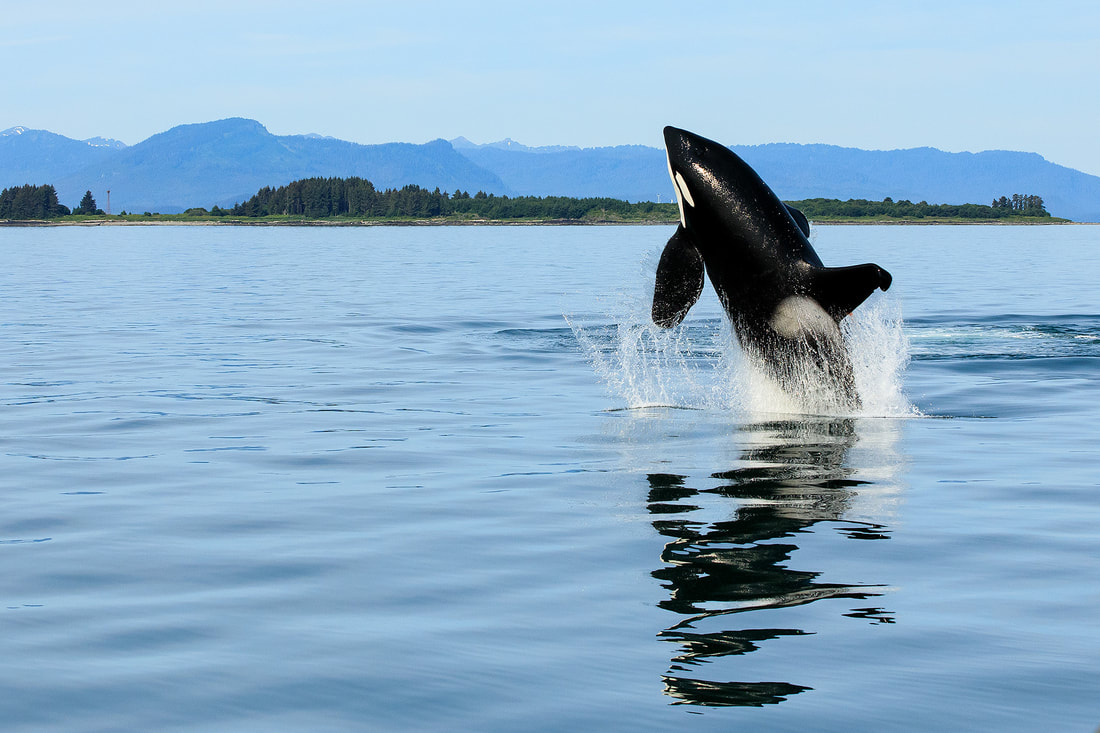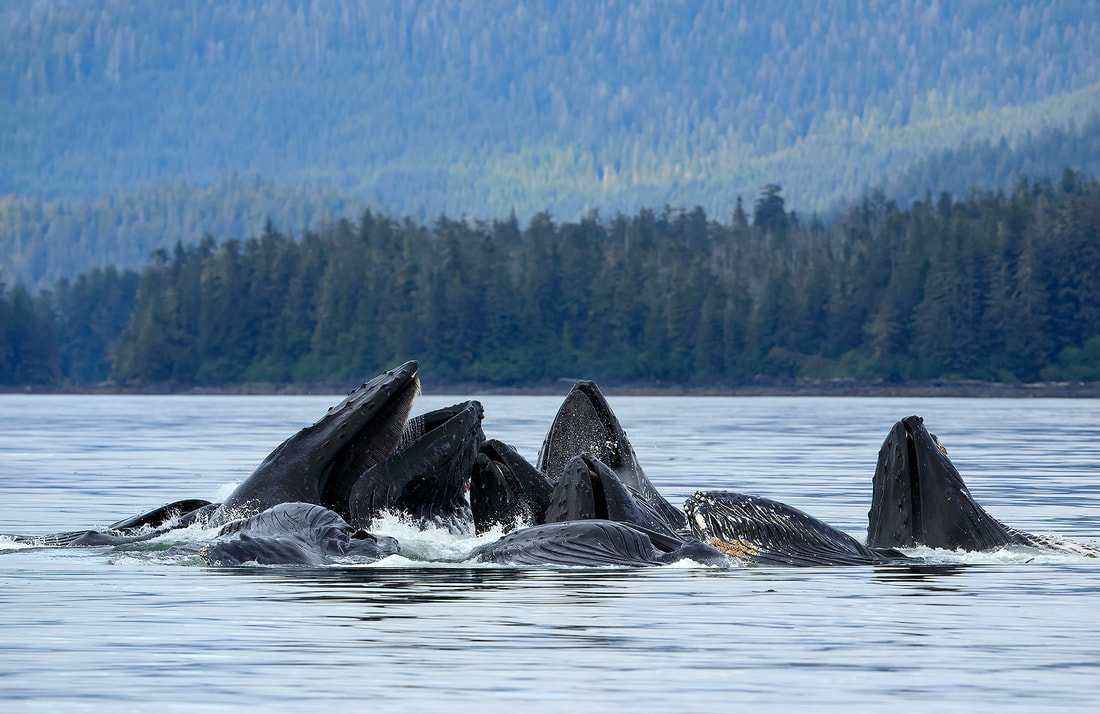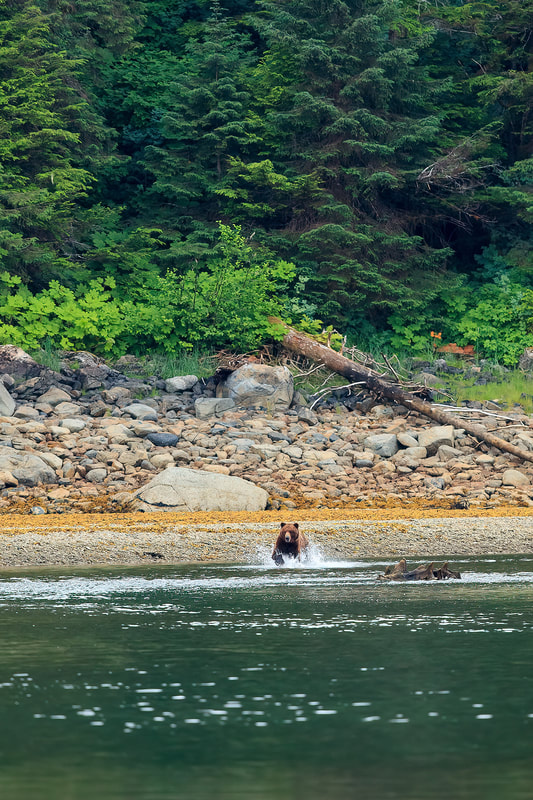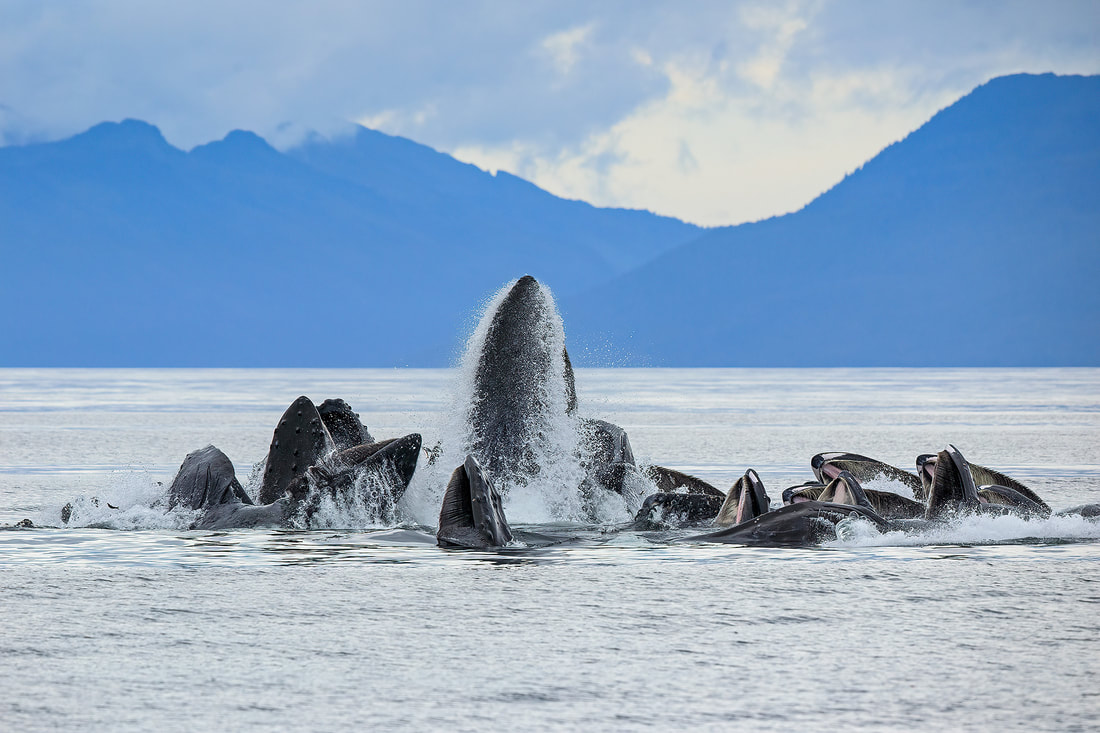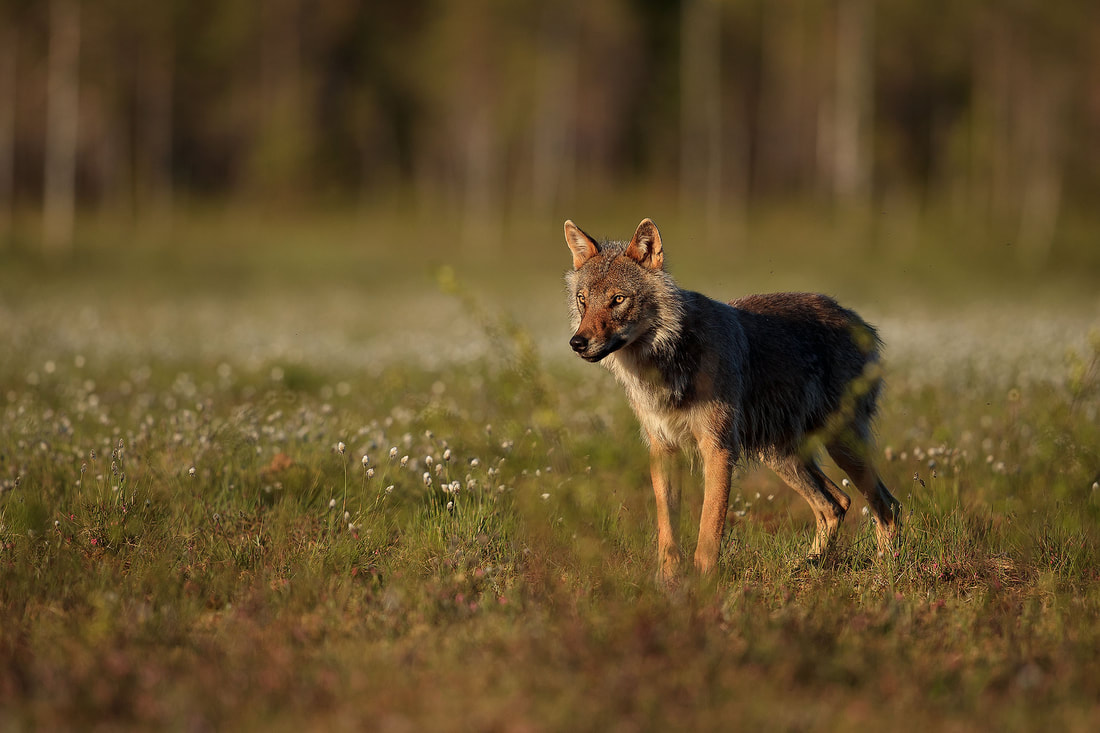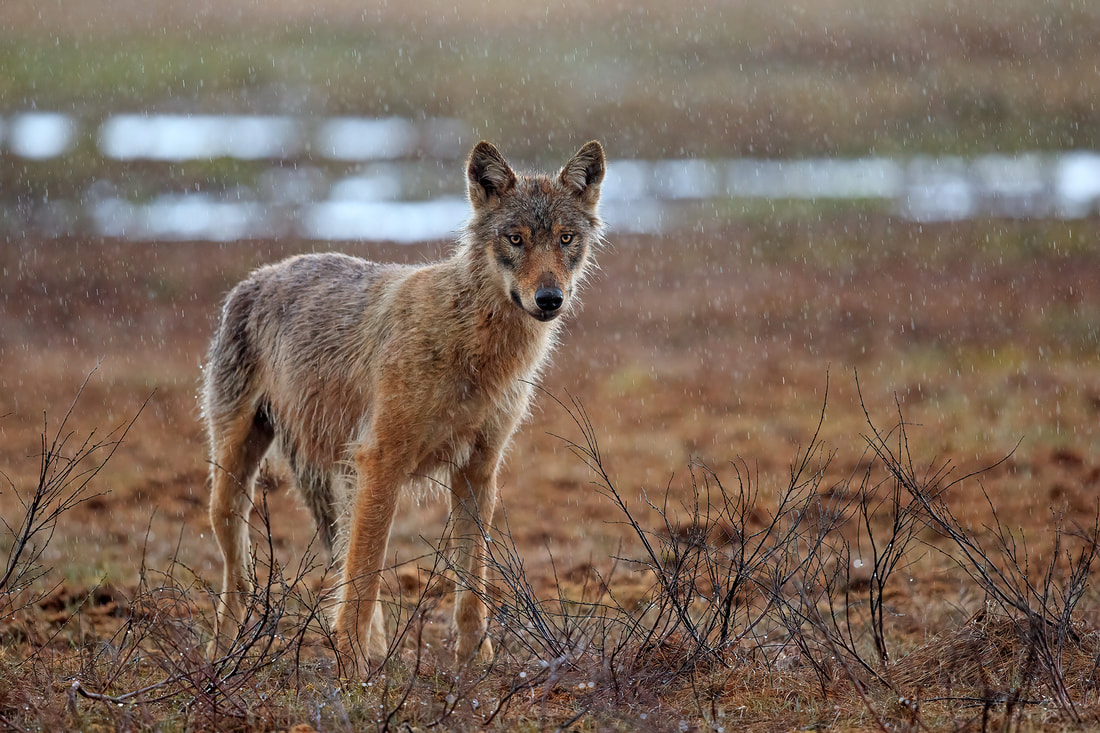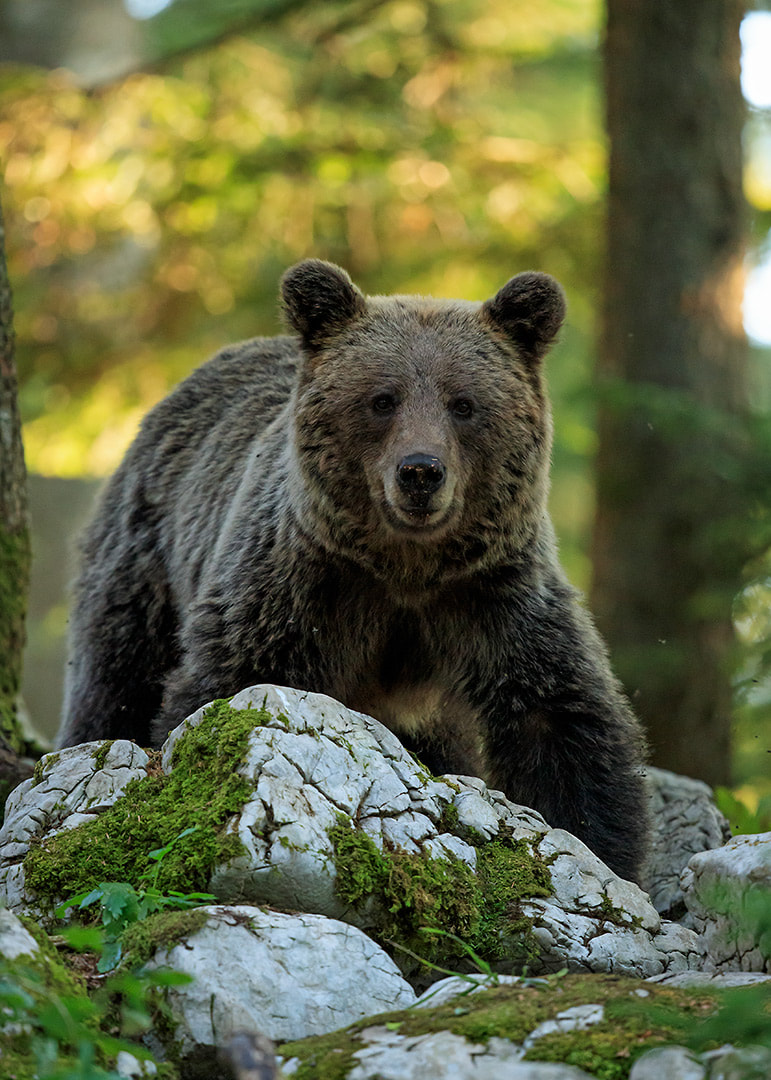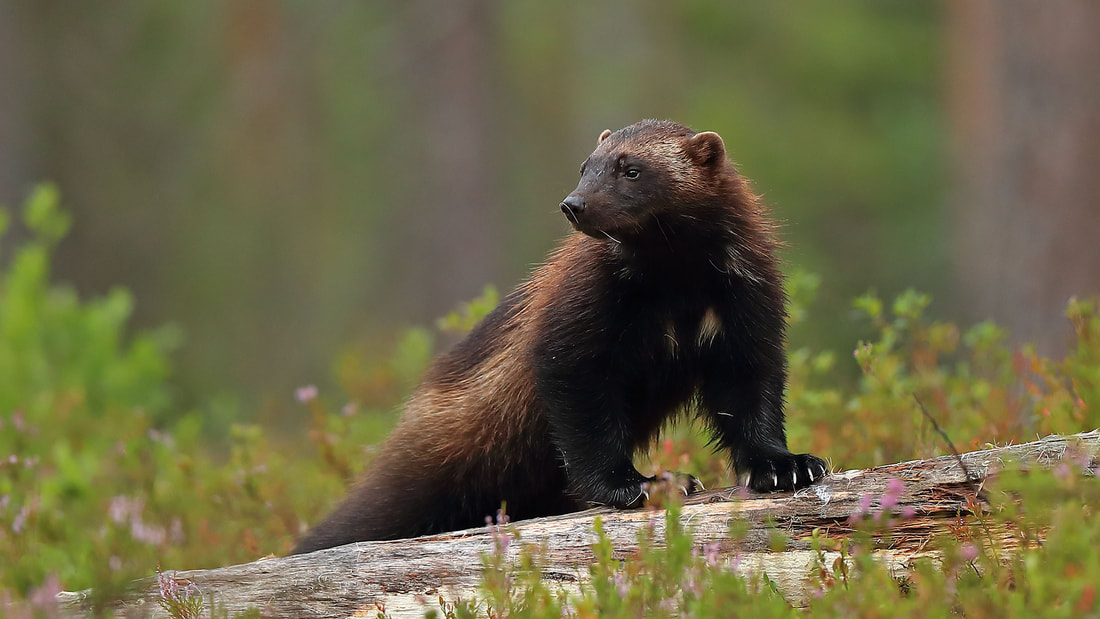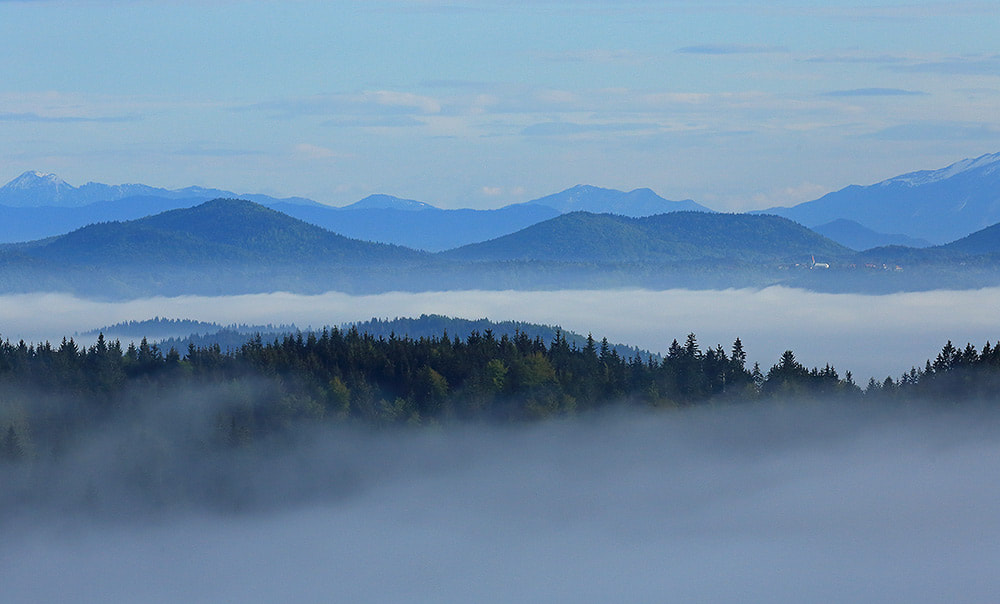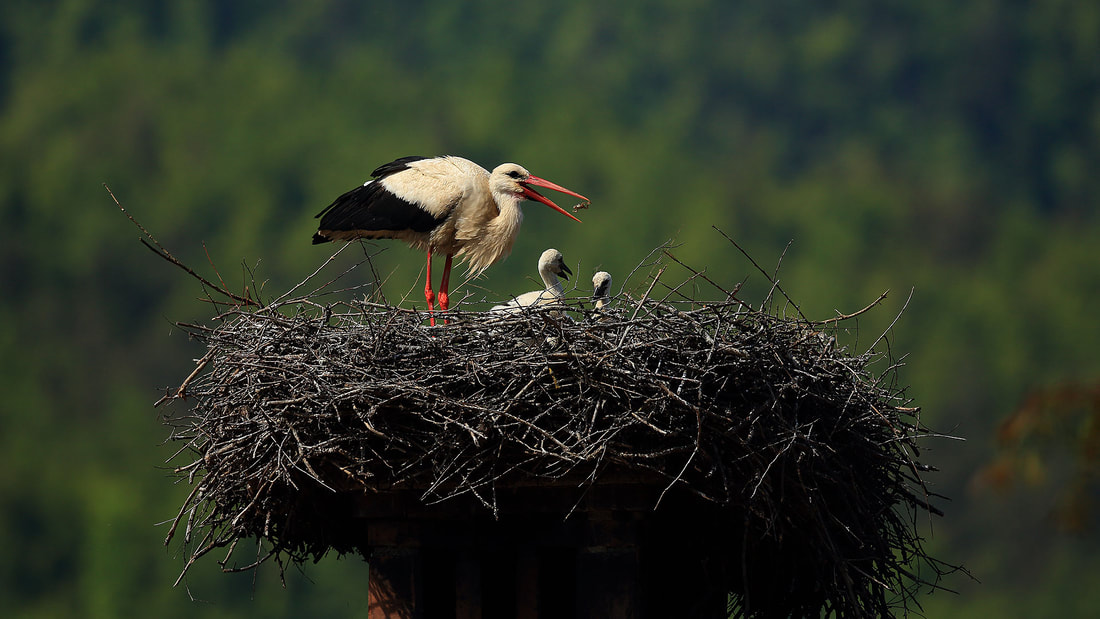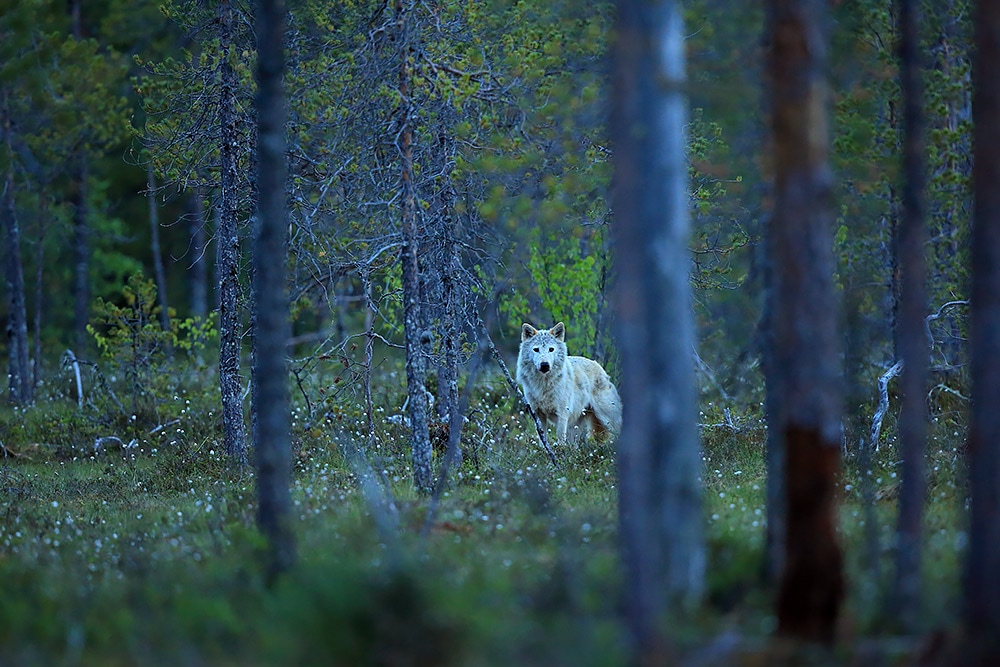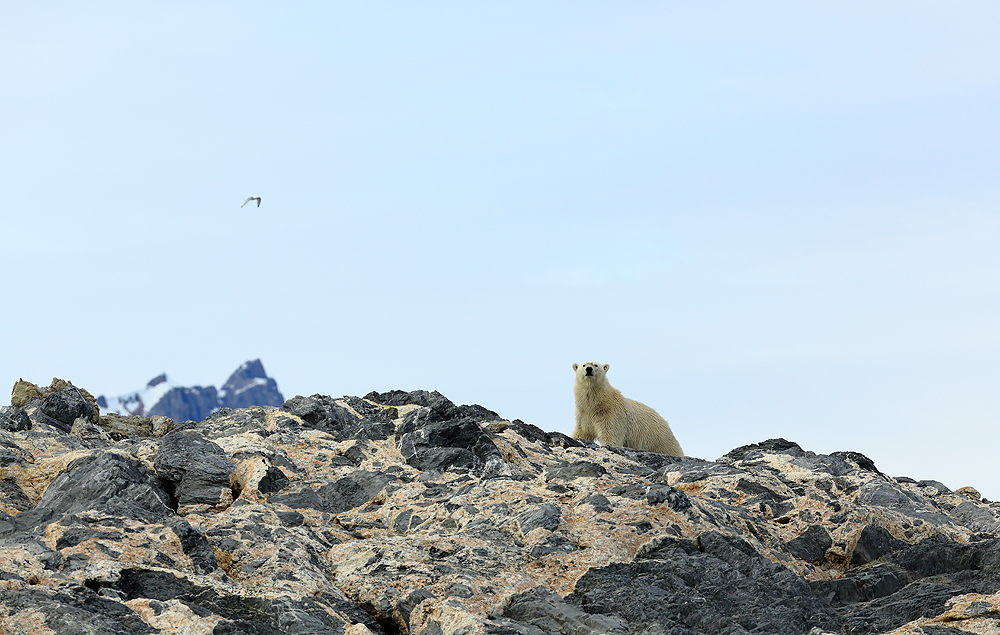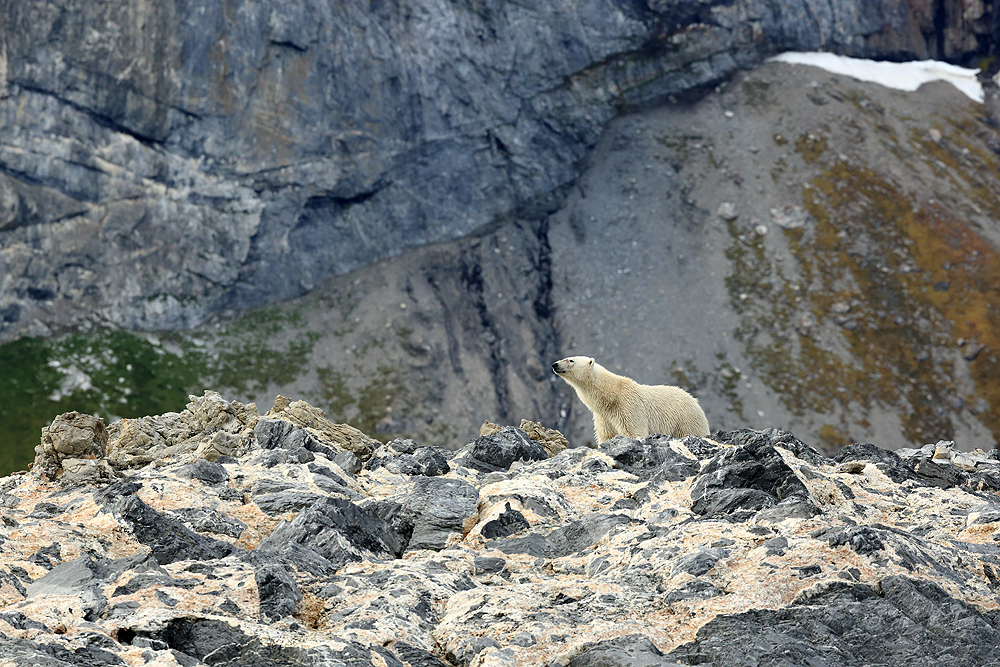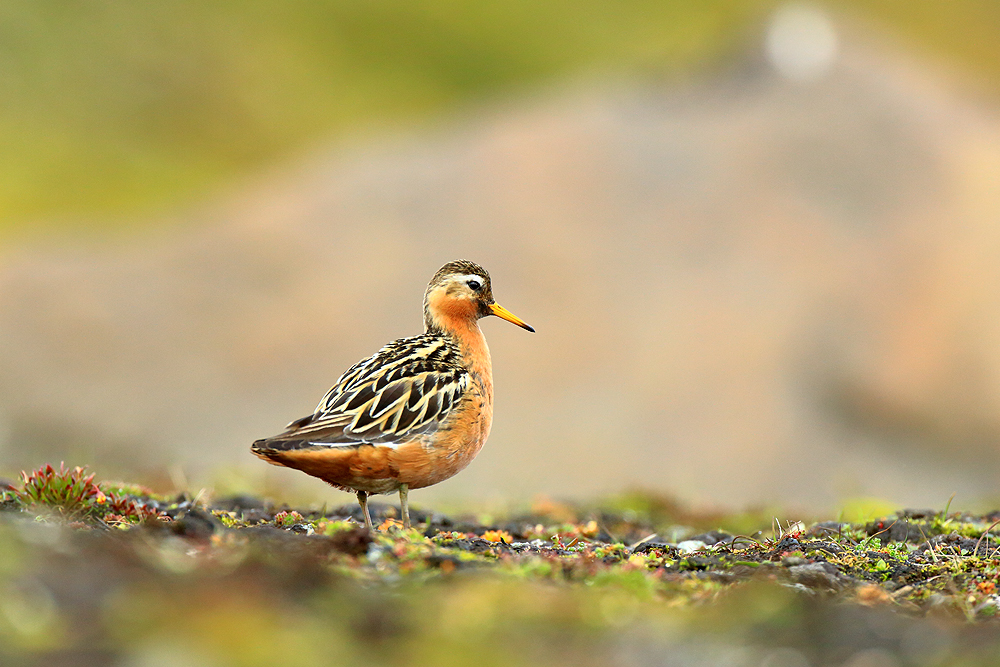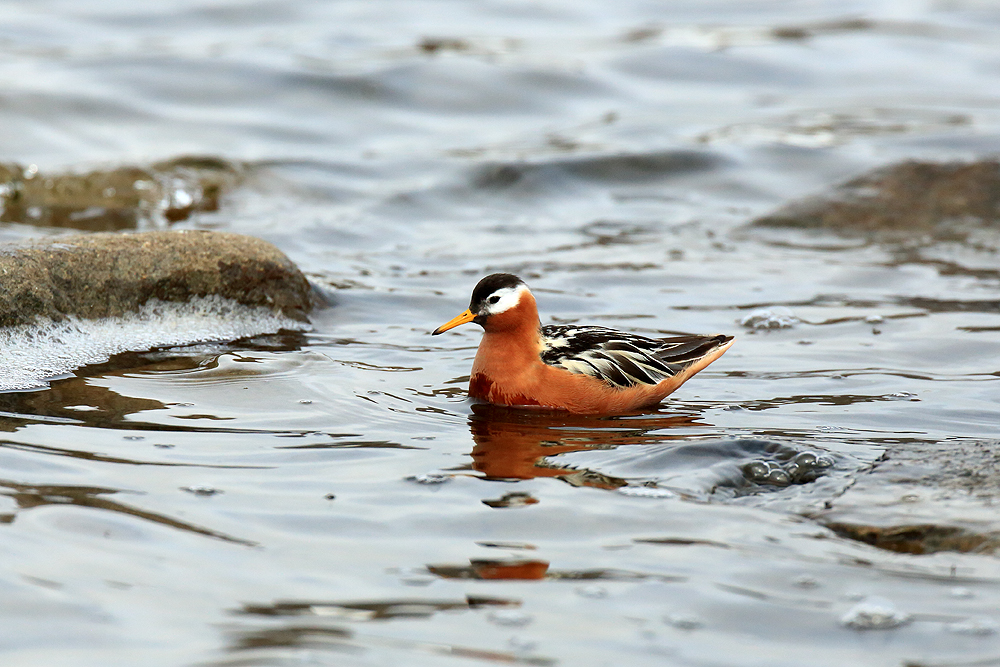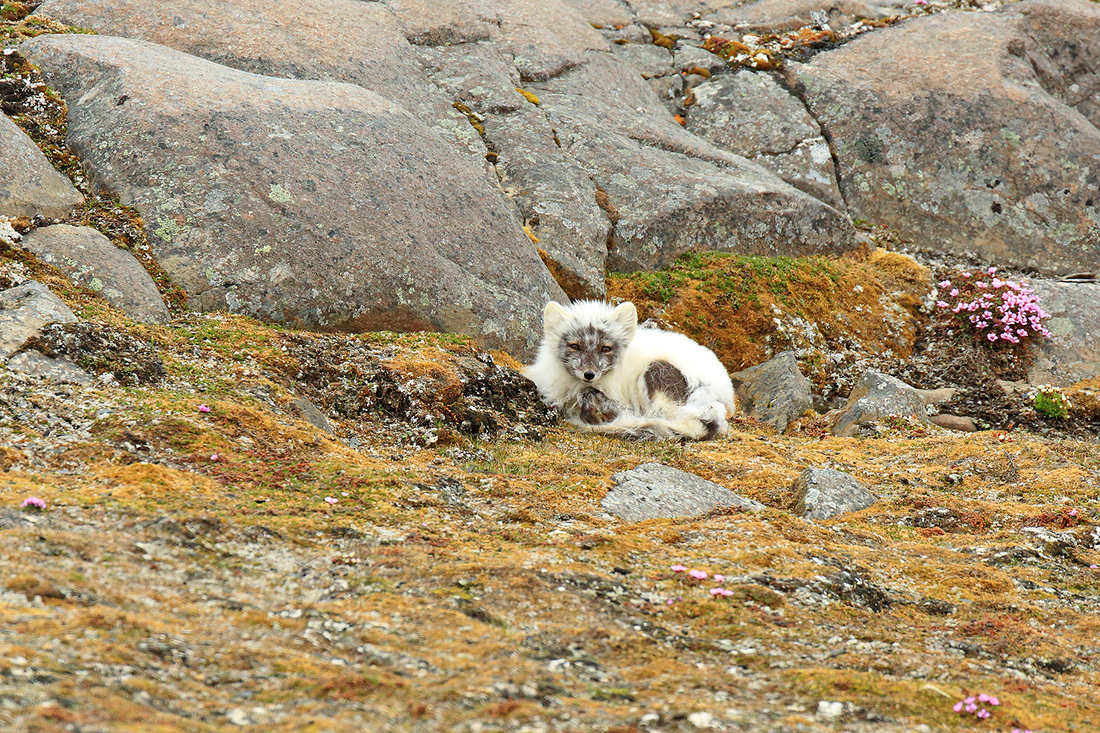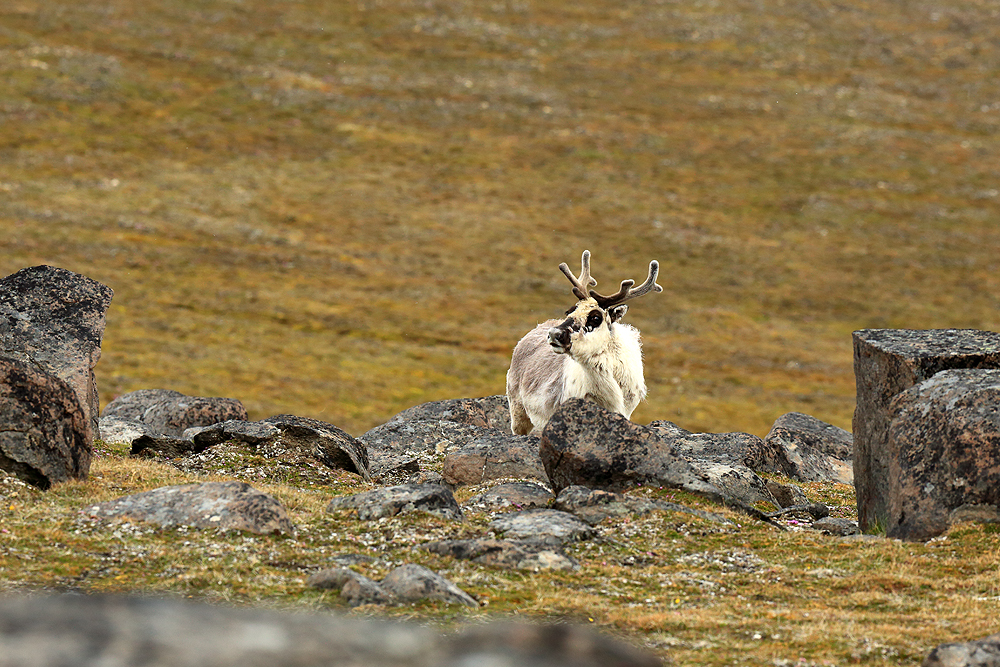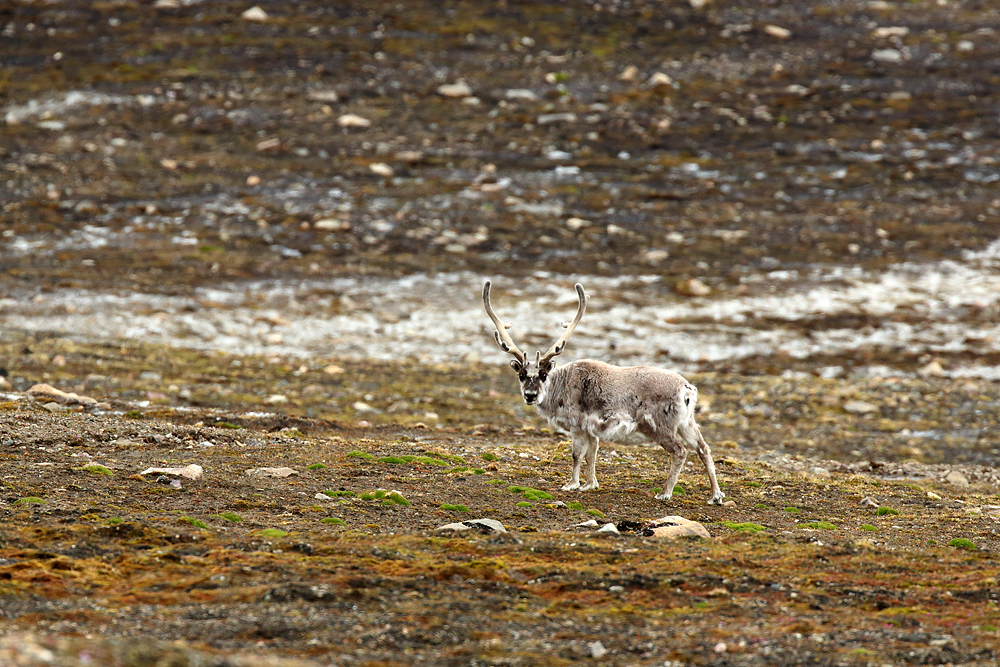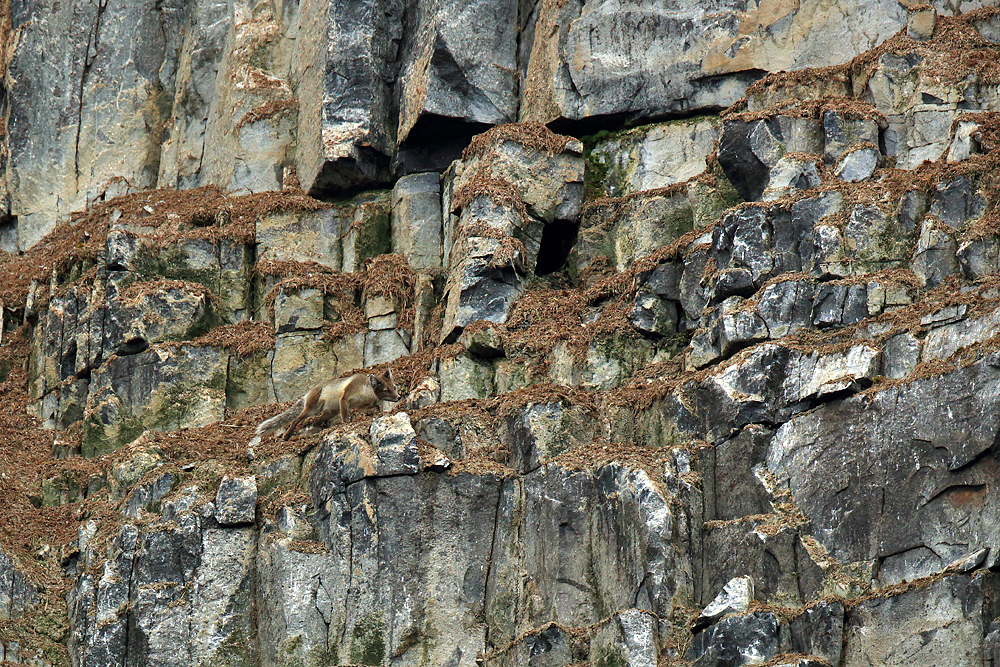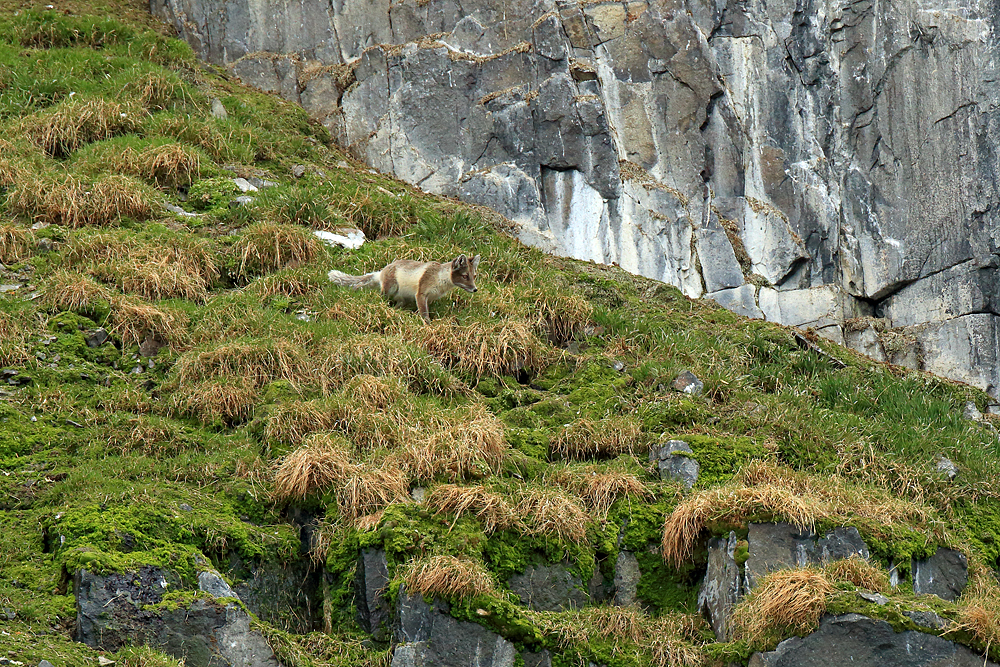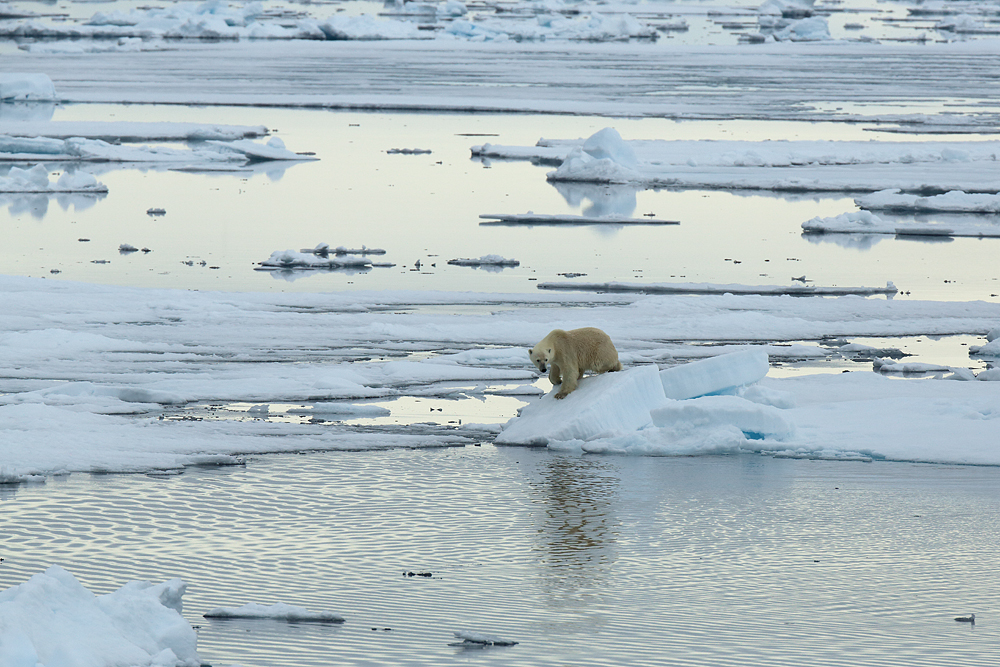|
Back in July I was privileged to lead Wildlife Worldwide's Seldom Seen Alaska photography tour. This unique tour had been developed in partnership with a local skipper, focussing on the region's exceptional whale watching and enjoying a plethora of other marine species and land-based wildlife too. Without a doubt though, it was the whales that really captured the group's imagination and the respective photography opportunities were world class. So, sit back, relax and enjoy the wild delights of Alaska's Alexander Archipelago. Almost immediately, setting out on the water, we were blown away by the jaw-droppingly beautiful scenery. The image above, is just one of the many incredible views we enjoyed of the mountains on Chicagof Island. This is just to whet the appetite ... As I mentioned before, despite the cetaceans of the region being the obvious draw, other marine mammals to put on a show included sea otter (in fact we saw hundreds throughout our voyage) and plenty of Steller's sea lions too. Within the first few days we had been treated to some truly exceptional encounters with countless humpbacks, a pod of transient orca (including a successful porpoise hunt) and both species of porpoise. However, it was the four or five days after that really took it to another level. We were treated to some mind-blowing behaviour. We witnessed hundreds of bubble-net feeding events. This is where a group of whales come together, with one lead whale blowing a ring of bubbles around a school of herring, before instructing the other whales to lunge in unison towards the bait ball at the surface. Not only is this a magical sight to see, but it is also one of the most remarkable things to hear. The lead whale calls as it blows the ring of bubbles, slowly forcing the fish into a tighter ball, before changing its call for the feeding frenzy. This call is audible when on the boat, as the sound resonates through the hull. Even now it gives me goosebumps just thinking back to it. We were also able to enjoy a couple of days enjoying the wildlife on shore around the small community of Kake on the island of Kupreanof. Here we were able to spend time at a salmon hatchery which was great for watching black bears as they tried their hand at fishing. Always watching on, looking for an easy meal, were the bald eagles, while other highlights included porcupine, deer and Pacific marten. The whale action didn't stop after our stay in Kake. In fact, you might say that the best was yet to come. We saw even more whales bubble-net feeding, with one event having more than twenty different whales take part. It was jaw-dropping. One of those moments where you feel the need to pinch yourself to ensure you aren't dreaming. We also had a whale breach over and over and over. What a sight.
We spent two weeks exploring the waters of this stunning part of Alaska. Constantly blown away by the magnificent scenery, welcoming people and of course the wildlife. If you would like to experience this for yourself, I can't recommend the trip enough. You can find out more and book your place here.
0 Comments
I have been photographing in Finland for the past 10 years and absolutely love being in the purpose-built hides set within the boreal forests. This remote region of eastern Finland, along the border with Russia, is home to some of Europe's most elusive wildlife including brown bear, grey wolf and even wolverine. I was delighted to lead back-to-back photography tours for Wildlife Worldwide staying at the isolated Kuikka Base Camp. Here are a few highlights from the time I spent in the hides with my dedicated and patient clients. Long hours and vigilance paid off with some stunning photography opportunities - particularly of wolf. As well as the wolves we were treated to excellent views of the increasingly rare wolverine as well as a young bear. It seemed that the bears mating season was running late this year and so we struggled to see as many as we would usually expect. The wolves were the real stars of the show and we really did have some memorable moments as they came incredibly close to the hides. Keep your eyes peeled for the next blog to enjoy more images of Europe's apex predators in the wilds of Finland's stunning taiga.
This year I had the privilege of leading three photography tours in Finland's remote eastern forests, right on the border with Russia for Wildlife Worldwide. Across the three trips we had some incredible sightings and exceptional photography, but as always, each had its own highlights. In this blog I am going to share some of my favourite moments from across the three tours. The magic of this remote landscape, is that you never really know what will show up and when. On one particular tour we had an awful lot of close encounters with a young grey wolf, another we had multiple wolverines and on the third we had the opportunity to photograph a great grey owl nest. Here is just a taster of what we saw ... As you can see, no matter what the weather, there are always excellent opportunities to capture some stunning imagery. The grey wolf above hung around for a couple of hours one evening and the rain just added to the moment. For me, the wolves are definitely the biggest draw. It is the only reliable location I know of where it is possible to capture stunning imagery of this elusive species. However, the area is fantastic for wolverines and brown bears, meaning there is never a dull moment. It is even more exciting when the different species show up at the same time. It is important to say (as I always do), that food is put out to entice the predators in front of the purpose-built hides. Furthermore, the food put out is typically salmon scraps or meat that is not fit for human consumption. There is the chance to join me in 2023 and photograph these incredible predators for yourself. You can find out more on the Wildlife Worldwide website and book your place on this wildlife photography extravaganza.
Well what can I say about the past 18 months - quite simply it has been pretty tough. I have been unable to lead any overseas trips since the start of the pandemic and only led a limited number of UK-based workshops. However, back in September, I headed off to the stunning hills and forests of Slovenia - one of my favourite corners of Europe. The Dinaric Alps are a wildlife photographer's paradise, home to over 800 European brown bears and a myriad of other species. I spent 7-days in the wonderful hides which I use when leading my tours to Slovenia, building up a great little portfolio of images. In the time I was there, I photographed over 10 different bears, including a number of mothers and their cubs. I can't wait to get back out in the field and leading tours once more. over the next 12 months. As you can see from these images, the surroundings for my sightings were exceptional and I was blessed with exceptional weather. You can join me in Slovenia next year for the opportunity to photograph the Dinaric Alps' population of brown bear.
I have been extremely fortunate, leading photography trips to Finland’s remote Boreal forests for a few years now. However, the first night of the trip I led for Wildlife Worldwide earlier this year, was without doubt one of the finest wildlife watching/photography experiences of my life. It all started as we settled into our hides for the first night. Our cameras were still being set up, we hadn’t even sat down when a young wolf appeared on the edge of the treeline. By the time we had all of our gear ready, the wolf had disappeared, but it didn’t take long for our first photographic opportunity. To start with, it was bears galore. Coming to feed on the scraps and carcass that had been left out (this is all done under license and is strictly regulated). As the evening flew by the wolves were joined by a pair of wolves, the alpha male and the new alpha female. I know the male well, having photographed him many times before and I did see the female last year. Below you can see a number of images from across our 4 nights in the hides and the video of what proved to be a moment of a lifetime. As the light started to fade, a lone wolf was wandering across the marshy ground in front of the hides. It was then that another wolf begin to howl in the trees to our left. Incredibly the whole packed joined in, pups and all, and finally the lone wolf joined in too. As I write this I have goosebumps thinking back to it, a tingling sensation down my spine, for it was the most astonishing noise I have ever heard. To be so close to such an incredible evocative noise was a moment I will long cherish and to get it on camera is even more special. Be sure to join me as I lead another Finland’s Boreal Predators photography tour for Wildlife Worldwide in 2020.
This year marks the third year in a row I have been to Slovenia to photograph brown bears in the Dinaric Alps. As I am sure you all know, I am extremely lucky to travel far and wide for my work, but Slovenia has a certain something about it. Of all the trips I lead for Wildlife Worldwide, Slovenia is one of my absolute favourites. Slovenia has moved into the 21st century without losing its charm, it still has character and its own identity. Idyllic mountain villages, breathtakingly placed churches, vast caves and exquisite wildlife all add to this charm offensive – I don’t know anywhere in the world that does it so well. Of course the primary reason for visiting the Notranjska region of Slovenia is for its thriving population of bears. This year we were once again treated to some wonderful sightings of bears, all from the purpose-built hides. The first couple of days were a little slow, but I think the heavy rain and cold conditions were definitely a factor. After that though, we had good sightings of bear each evening, providing some fabulous photography opportunities. What I really love about photographing bears in Slovenia, compared to other places in Europe in particular, are the stunning forest settings in which the bears can be seen. You can build up a stunning portfolio in just a few days, and this year my group did just that.
I will be heading back to Slovenia in August for my own photography and I look forward to seeing the landscape at the end of summer. Sadly, in 2020, I will not be leading the Slovenia tour organised by Wildlife Worldwide as I will be leading in Svalbard instead – hopefully photographing some white bears instead. Rest assured though, the trip will be led by another talented photographer in Tom Mason, and the trip promises to be another roaring success. I have been to India numerous times before and it goes without saying that the main draw is the largest of the world’s cats, the tiger. However, there is so much more on offer in this remarkable country and earlier this year I visited a state I had not previously been to, Karnataka. I led a non-photographic trip, acting as a naturalist guide, in Nagarhole National Park. This is without a doubt, one of the finest reserves I have been to on the Indian subcontinent, a forest reserve that plays host to a staggering array of species. There are tiger here, needless to say, but it is the chance of seeing a black leopard that draws many to these foothills to the Western Ghats. When you throw in traditional leopards, Asian wild dog, wild Asian elephant, sloth bear and countless bird species, it really is a wildlife-lover’s paradise. As it wasn’t a photographic trip, I only managed to get some quick snaps, but hopefully these following images give you a real taste of what is on offer here … What a place Nagarhole is. All I can really say is that you need to book on to a Wildlife Worldwide’s Nagarhole’s Tigers, Wild Dogs & Leopards trip for 2020.
It has been a crazy few months for me – I have been leading trips left, right and centre. No moaning from me though as it has been absolute delight to take so many fantastic people all over Europe, showing them some of the most incredible wildlife and hopefully helping them get some great images too! The next instalment in this summer’s schedule was a trip to one of my favourite spots, right on the Finland’s eastern border with Russia. It is here I lead Wildlife Worldwide’s Boreal Predators Photography tour, which gives my clients a chance to photograph European brown bear, grey wolf and the feisty wolverine. All I can really say about this year’s tour was wow, wow and well… WOW! We were treated to a remarkable number of sightings of all three species and the photography opportunities were mesmerising. Even with a faulty camera I was able to capture some awesome images, my clients images really blew me away so it was a hugely successful trip. And now to the photos, all I will say is that I hope you enjoy them… It must be said that every night in the hides was productive and they allowed the entire group to capture a wonderful array of images. What I have included here are just a small taster. I have only included on wolverine as I was always in a hide that didn't have the prime views. It is very important to me that my clients are the ones who get the best images, after all it is their holiday and I want them to get the most out of the experience. On the last night of the trip the whole group were treated to some breathtaking sightings and unrivalled photography opportunities. The images above (I think at least) perfectly demonstrate why Finland is such a superb destination for a photography holiday. The light is absolutely brilliant, the wildlife is stunning and the photography is very hard to beat.
So if you fancy joining me in 2019 for another foray into the boreal forests of Finland, be sure to visit Wildlife Worldwide's website for more information. A land of countless lakes and seemingly infinite forests, Finland is one of Europe’s wilder corners. In recent years the country has become well regarded as the finest bear watching location outside of the Americas. However, I had heard of a particular location (right on the Russian border), where it was possible to see and even photograph European Brown Bear, Wolverine and even Wolf. This place sounded too good to be true! So after a lot of digging and hours of reading through reports, I had all of the information I needed. In the end I decided it would be a great place to run a wildlife photography tour with Wildlife Worldwide. We have named the tour ‘Boreal Predators Photography’ and it certainly lived up to its name this year. Towards the end of June I set off with 6 eager clients, all keen to photograph the iconic species of this border region, or ‘no man’s land’, between Finland and Russia. Now I must start by saying that Finland hasn’t really had a spring in 2017, and therefore all the wildlife’s behaviour has been particularly unpredictable. We spent a total of 4 nights in the hides, all of which were different. This year was particularly cold, which makes it much harder to get comfortable within the hides, but our perseverance paid off in the end. The first night was a little disappointing with only a couple of bears seen at a bit of a distance, one of which was particularly nervous. Don’t get me wrong, it is still incredible to see the magnificent mammals, it was only disappointing from a photographic opportunity point of view. The second and third nights made up for it though, with at least 4 different wolverine spotted across 3 locations (the group had to be split on the second evening), the very nervous bear made another appearance and the icing on the cake had to be two Grey Wolves seen on both nights. On the second evening, a client and I were treated to a pair of Wolverine – the light was at its worst when they appeared, but we got a few acceptable shots in the end. Just as we thought the evening was coming to a close, it was probably around 3 am, I noticed a light shape moving on the edge of the forest. It was obscured by a light mist, but there was no mistaking what we had in front of us. It was a Grey Wolf … in fact there were two wolves. It was a magical encounter, a real privilege and a challenge to photograph in such low light and the mist. It was the last night of the trip when everything really came together. We were only going to be in the hides until around midnight as we had to leave first thing for our flight back to Helsinki. I decided we should try our luck at the pond, where I had previously seen the two Wolverine and wolves. I can honestly say that the evening was one of the very best I have had in my career. The light wasn’t necessarily the best, but the sightings we had are some of the finest anyone could possibly ask for. In fact, the evening actually started relatively slowly. It all seemed like it might be disappointing end to the trip. As the sun was losing its strength and retreating over the tree line, one of my group spotted a large bear moving through some marshy ground. It was heading right at us, slowly powering through the swamp. You could hear the strength of every movement, it was absolutely incredible. The bear posed perfectly for us and the whole group managed to get some wonderful shots. Having had its fill on the salmon scraps left out, the bear slowly made its way back towards the forest, slowly melding into its wooded surrounds. Having had such a remarkable encounter, everybody seemed to be settling back into their seats (figuratively speaking), when I noticed a familiar light shape on the edge of the treeline. I stopped myself from saying anything, took a breath, then raised my binoculars and my jaw slowly dropped. I knew what it was, but I didn’t really believe we could be so lucky. Surely I was suffering from sleep deprivation? There some 70 yards away was a white wolf, the one I had seen at a distance on the previous two nights, and it was followed by a second wolf. The white wolf was the female, whilst the second was tan colour, and this was the male. The female slowly made her way towards the hides, seduced by the smell of the fresh meat of a carcass. The next 15 minutes were spellbinding. She came to within only 20 metres of the hide … it was her size, her obvious power and that stare that left me breathless. I have never known a stare like it. I have been all over the world, photographing Polar Bears, Leopards and Tiger, but never has an animal looked at me with the same intensity or intelligence. This really was a once in a lifetime encounter and one that will stick with me for the rest of my days. If you would like to join me in Finland, I will be leading another ‘Boreal Predators Photography’ tour with Wildlife Worldwide in June 2018. I can’t promise the tour will be the same as this year’s, but I can guarantee it will be a great adventure.
For the entirety of this trip I was using a Canon 500mm F4 IS II USM lens which was kindly provided by Fixation. I will be writing a separate post with a review and my thoughts on using the lens if the field. This morning we awoke to big blue skies and headed into the spectacularly beautiful Hornsund. This massive fjord is surrounded by dramatic mountain peaks and destructive glaciers. Being so far South, I have to admit I really wasn't expecting to see as much of the truly specialist Arctic wildlife. Upon arrival in this stunning setting a female Polar Bear was spotted on the shoreline and then moments later another larger bear was spotted on the far shore (perhaps a male). We would be going on a Zodiac cruise to see if we could get any closer to the bears and then on to explore the fjord ... little did we know what was in store for us all. We all met on the deck and waited to board our Zodiacs for our afternoon cruise, I was with the Naturetrek leader Peter Dunn and expedition leader Jan Belgers. We set off as one of the lead boats and headed toward the small headland where we had earlier sighted the female bear. As we approached the shore line we realised that the bear had moved on and as much as we were scanning both the water and the shore we were unable to see anything. Peter then spotted some movement on the water's surface way out in the fjord ... it was the bear, it had managed to slip by us in the ice-cold water. The bear approached an island and we all held our breaths as we prayed the bear would be a 'quality' bear. It was definitely a 'quality' bear ... The real benefit of the island was that the bear felt completely at ease and we could travel all the way round for a constantly changing backdrop. As a photographer you always want to try and capture that image that stands out and lingers in the mind, this really was the perfect photographic opportunity. Even then this was one of those moments where you just have to put the camera down and really take in the moment! We slowly moved around the island the backdrop was more than you could ever have dreamt of. We slowly moved closer and closer, all the time keeping an eye on the bear to make sure it was completely at ease. We all go the odd glance and a quick sniff but it certainly wasn't affecting its scavenging behaviour. The bear was obviously search for whatever food it could find, it is known that a variety of birds breed on this island in the summer months. After a wonderful hour with this remarkable Polar Bear we thought it would be best to leave it in peace and leave it to carry on with its search for food. With a few months remaining until the sea ice returns this bear will really have to try and conserve its energy and find whatever scraps that are available. We move further up the fjord to see whether we could approach the second bear, he was a huge male but he was not at ll interested in us and remained in his slumber. We carried on towards the head of a glacier to explore the amazing landscapes and the ice-filled water. I really hope you have enjoyed looking through all of these images and with only one more post left, I think that this is perhaps the highlight of the cruise. This day was quite possibly the most memorable of my life outside of my time in Africa, with jaw-dropping landscapes, danger and unbeatable wildlife encounters I am not sure what can beat it.
Coming up are some charismatic reindeer and a few more landscapes so please keep on reading. Our planned landing site for this morning was Kapp Waldburg, a site for nesting Kittiwakes in a steep sided canyon. As we arrived at our landing point we heard over the loud speaker that there was a Polar Bear and we would have to head elsewhere to stretch our legs. From there we headed on towards the tundra habitat at Sundneset, once again as we approached the landing site the Polar Bear call went out again. This bear was very relaxed and the expedition team decided it would be safe to land slightly further down the coast and have the ship keep an eye on the bear's where abouts. As we landed we were greeted by a truly wonderful site, a stunning pair of Grey (or Red) Phalaropes were feeding only yards away from us. The male was particularly obliging, carrying on with its feeding as if we didn't even exist, the female on the other hand seemed to be rather skittish and wasn't a particularly good poser. Unusually for the bird world the female Grey Phalarope is actually the more beautiful. The males take care of the eggs and ensure they hatch before raising the chicks, the female visits a multitude of males and lays her eggs with a few of them ensuring that they have the best chance of survival. As we left the two phalarope to their own devices we headed inland across the tundra and had an unexpected but truly wonderful encounter. A very shaggy Arctic Fox was heading towards us and we were blessed with extraordinarily close views. The fox had not yet lost all of its winter coat and spent a bit of time rolling around doing its best to free itself from its Arctic jumper. There were also a few Svalbard Reindeer within the vicinity but they were all a little nervous around us. After spending a couple of hours on shore and aware that there was still a Polar Bear within the vicinity it was time to head back down to the Zodiacs and transfer back to the Ortelius. As we reached the landing site we realised that the male Grey Phalarope was still feeding and happy to pose for the photographers in the group. After another incredible lunch we set sail for Dolerittneset, the ship anchored and we were once again out on the Zodiacs heading for shore. I joined the hiking group and we climbed up into the misty hills that towered above the water. We really didn't see much except for a few reindeer and a couple of ptarmigan and even Stein (our Norwegian guide) seemed to find the climb hard work. I am sure on another day the views could have been superb but on this day the visibility was less then 20 metres.
We eventually headed back down towards the ship and had a look at the multitude of Walrus bones that littered the shoreline. This was once a great Walrus haulout but unfortunately they were nearly hunted to extinction in this area. There were a couple of individuals on the shore but no longer were there the numbers that once thrived here. Once we were back aboard the ship, we headed for the southern most tip of Spitsbergen and up towards the stunning fjord of Hornsund. This took us all night and most of the next morning but what was in store in Hornsund was something none of us ever expected, it was a day that will stay with me until the day I die ... keep reading to find out what Hornsund had in store. Having had two Polar Bear sightings in as many days the morale was high among the group but sadly our planned excursion to find the Walrus haulout was a no go. It seemed that nobody was at home and so we moved on to the fhord at Faksevagen. Here we went off on our first proper walk to explore the Arctic Tundra. We set off with our Norwegian guide Stein and headed up the hillside into the slight mist. Stein was completely relaxed and didn't seem at all worried by the possibility of any bears. We spotted a few Reindeer here and there but they all seemed to keep their distance from us, suddenly we had company ... a Purple Sandpiper. The bird blended in superbly well with the tundra and you can see why they breed in this terrain. Then at long last the Reindeer came close enough for me to get a few shots, including the lovely male below which had a great set of antlers. As we walked along the edge of a shallow ridge line we suddenly saw a white animal appear within only a few yards of us. Your reaction says Polar Bear but luckily it was only another Reindeer, and luckily for me he posed nicely for a few photographs too. At the top of the ridge we had a sighting of the ship surrounded by an ice floe that had been at least half a kilometre away when we landed. It just goes to show how quickly the environment can change in this amazing landscape. We headed back to the ship for yet another filling lunch before we headed to the amazing breeding colony of Brunnich's Guillemots at Alkefjellet. We were told to dress warmly as we were going to be on the Zodiacs for at least a couple of hours and possibly more depending on the quality of the sightings. We went out onto the water in our Zodiacs and I had our Austrian guide Barbara (an expert on Glaciers). We made our way slowly towards the cliffs and at first there were just a few hundred birds on the tiny rocky outcrops, where each bird was incubating a solitary egg. However, as we made our way further along the cliffs, away from the ship the sky seemed to be filled with birds. The cliffs were towering above us, stained a mix of white and pink from the guillemots' droppings, and the birds were there in their thousands. The noise was quite amazing and it was an incredible spectacle which I feel truly honoured to have seen. We were desperate to see our first Arctic Fox at Alkefjellet and when we came to a grass covered scree slopes it was the best chance we would have. We scanned and we scanned but we just couldn't see any movement ... then Barbara spotted one, our first Arctic Fox. She was so excited and we were too, it was a long way off but it was an amazing sighting. We eventually decided to leave the fox alone and head back to the ship for the evening and yet another meal. Tonight we were heading to a fjord that has only be visited by a handful of vessels, even our expedition leader had never been there before. We were now really on a true Arctic expedition and heading into the unknown.
Having spent the night in the ice, all was clear on the Polar Bear front but we weren't to be put off. Today we were going to head through the ice and see if we could find some more bears. After breakfast we were to have a lecture about how to sex Polar Bears, as the lecture was coming to an end a call went out over the loud speaker ... a Polar Bear was on the horizon. We made our way towards the bear and this bear seemed more relaxed in our presence but as we approached a group of Harp Seal swam around the ship's bow. It was amazing to get closer to this bear and see it behave as if we weren't even there ... After 45 minutes or so we decided to leave the bear in peace as we didn't want to break the ice and destroy its potential hunting habitat. We set off through one of the many clear channels in the ice and headed east along the coast of northern Spitsbergen. As we made our way through the ice we disturbed the water and were therefor accompanied by Fulmars, Kittiwakes and Glaucous Gulls. I went to the stern of the ship and photographed these birds as they performed their aerobatics. As we kept on heading through the ice to the remote island of Moffen we noticed a large lump on the ice, it was a Walrus ... our first of the trip! As we got closer, much to our dismay, the Walrus slipped off into the icy water and out of sight. We were all a little disappointed but then to our delight we noticed a multiple of lumps, yet more Walruses. It was a bachelor group of Walrus, sitting on a small ice floe and creating quite a mess in the process. The ice was less than pristine but the Walruses certainly seemed content as the captain swung the ship to try and make sure everyone on board got a great view. So with Walrus finally ticked off and some close relatively close encounters from the lowest point on the ship we headed off towards one of the fjords where we hoped to land the following morning. The target ... yet more Walruses but this time at a well known haul-out point.
|
AuthorBret Charman Archives
July 2024
Categories
All
|






